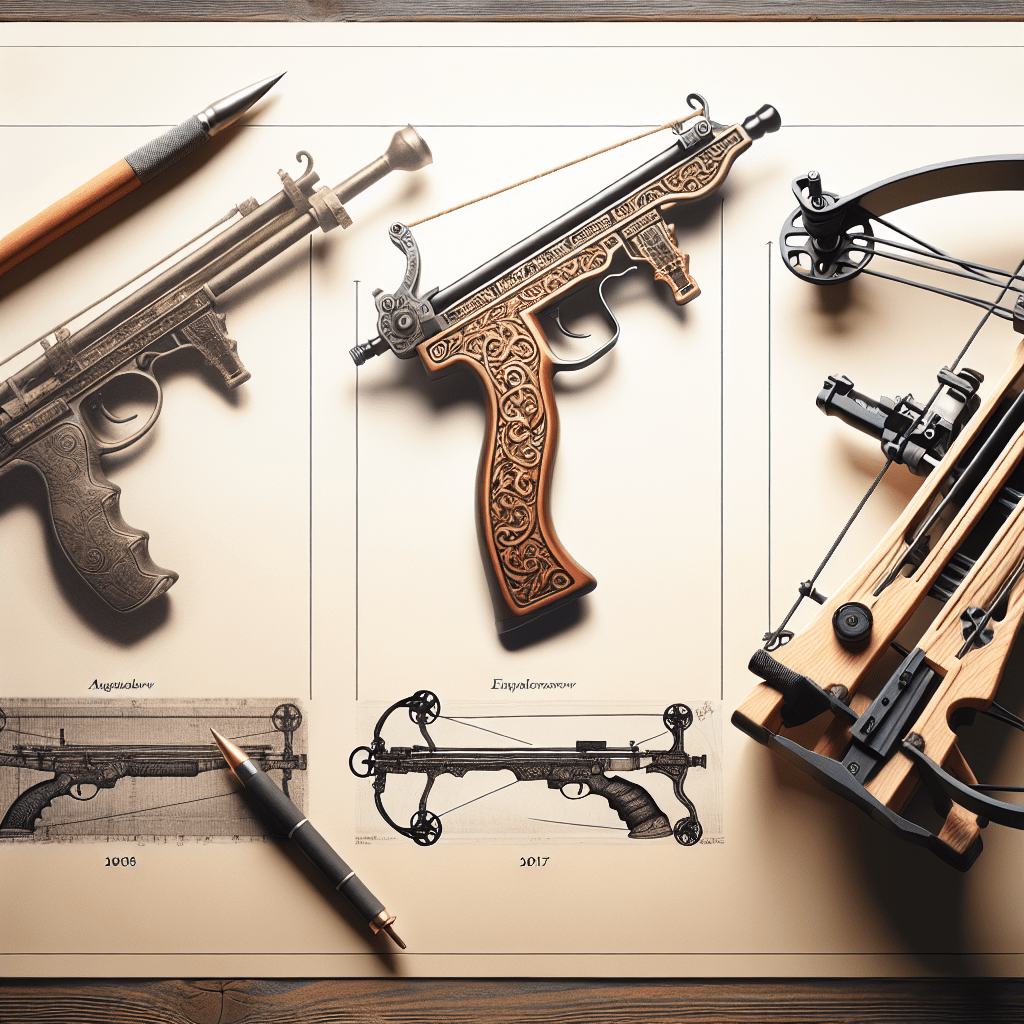###
The Evolution and Significance of the Crossbow in Historical Warfare
Introduction to the Crossbow
The crossbow is a ranged weapon that has played a significant role in the military history of various cultures around the world. Conceived as an innovation that allowed greater launching power than the traditional bow, the crossbow combines mechanisms of a bow and a stock and has undergone numerous evolutionary changes throughout history.
Historical Development of the Crossbow
The origins of the crossbow can be traced back to ancient China, where it was invented around the 5th century BCE. It was an advanced version of the bow and was used extensively during the Warring States period. Crossbows were adopted by the Greeks, Romans, and eventually medieval Europeans, due to their ability to launch bolts with considerable force and accuracy.
Throughout these periods, engineering improvements were made, such as the stirrup that allowed for easier loading and the trigger mechanisms that improved shooting accuracy. Each advancement solidified the crossbow’s standing as a weapon of great importance on the field of battle.
Operational Mechanics of Crossbows
Functionally, a crossbow is operated by placing a bolt or quarrel onto the weapon, drawing back the string into a locked position, aiming, and releasing the string with a trigger mechanism. The mechanical advantages over traditional bows include less physical exertion to use and ability to remain loaded for longer periods, hence allowing soldiers to prepare their shot without continuous strain.
Military Impact and Strategies Employing Crossbows
Crossbows changed military tactics significantly. They allowed armies to engage at longer distances with greater penetrative power compared to standard bows. During medieval times in Europe, crossbows became renowned for their efficiency in penetrating armor, which indirectly stimulated advancements in protective armor technology.
Another prominent advantage was that training soldiers to use crossbows required less time compared to longbows. This contributed to its widespread adoption among militaries, which could field effective ranged units with lesser training investments.
Social Impact and Legislation
Due to their lethality, crossbows also had social implications. They were sometimes considered unethical or unchivalrous weapons as they enabled even low-skilled individuals to kill armored knights, disrupting traditional warfare and societal hierarchy. This perspective led several historical figures to call for bans on crossbows at various times.
Technological Variations and Advancements
Over centuries, crossbows evolved in design, increasing their power and accuracy. Innovations included compound crossbows and repeating crossbows, which boasted mechanisms allowing multiple bolts to be fired without a need for reloading after each shot.
In modern times, while overshadowed by firearms, crossbows still have recreational uses in sports and hunting. Modifications adapted them for these activities, often incorporating advanced materials such as carbon fiber for enhanced performance.
Cultural Representation of Crossbows
Culturally, crossbows have a place in art, literature, and film as iconic weapons. They are frequently associated with medieval warfare but are also depicted in fantastical contexts alongside more mythic or magical weapons.
Crossbows Today: Recreational Use and Legal Restrictions
Today’s use of crossbows is mainly found in sport and recreational hunting. Various establishments exist offering archery ranges specifically designed for them, and they feature prominently in recreational hunter’s equipment lists. Legal restrictions vary by jurisdiction with regulations regarding ownership transfer, usage during hunting seasons, and by individuals under certain ages or criminal records.
